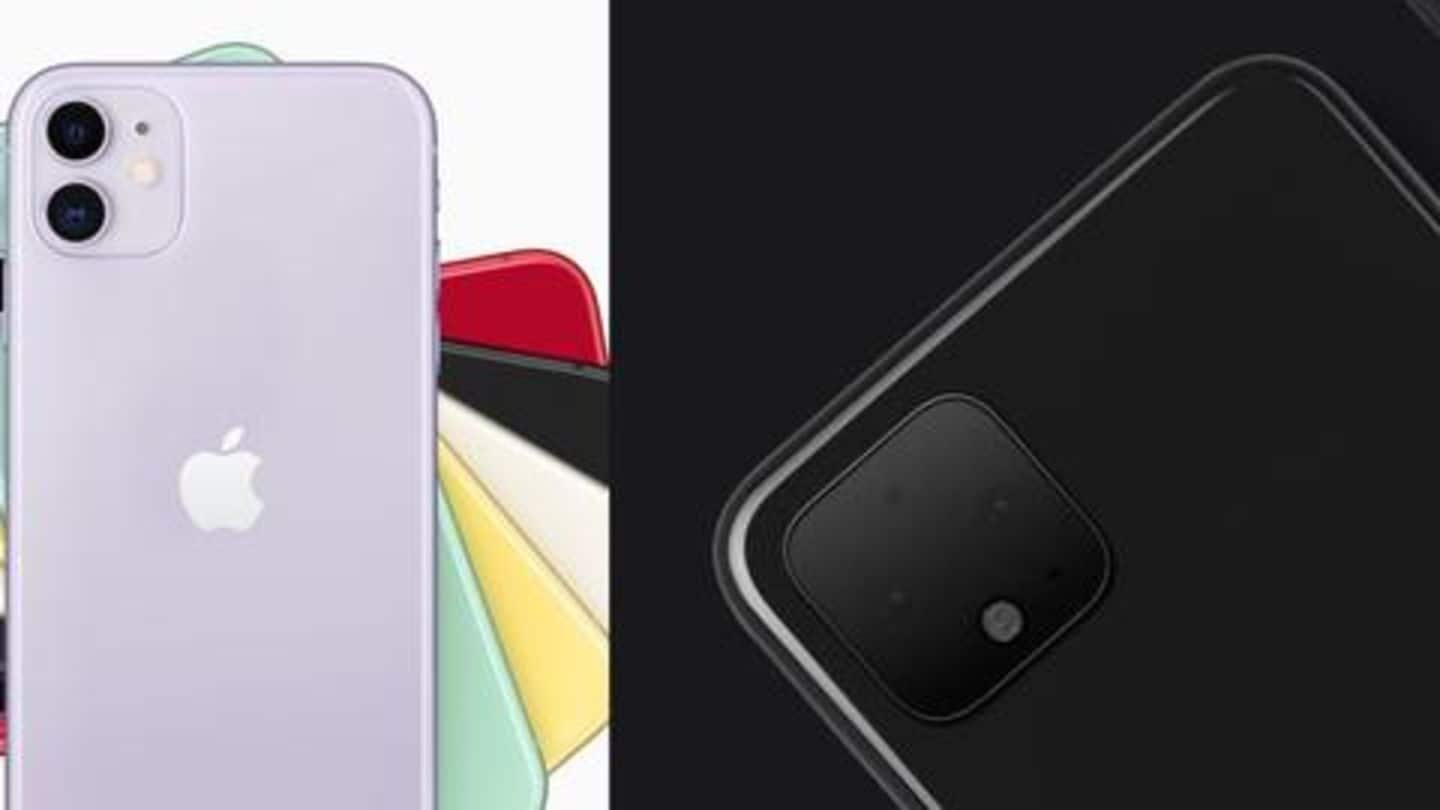
Pixel 4 v/s iPhone 11: Which one should you buy?
What's the story
Following weeks of leaks, Google has finally launched its flagship Pixel 4 smartphone. The new model comes as a significant upgrade to the Pixel 3 with a new design, face unlock feature, a high refresh rate screen, faster Google Assistant, radar-assisted touchless gestures, and a dual-camera system. But how does the new Pixel compare with Apple's iPhone 11? Let's find out.
Design
Pixel 4 v/s iPhone 11: At a glance
The Google Pixel 4 offers a notch-less edge-to-edge screen with slim bezels on three sides and a rather chunky top-bezel design. In comparison, the iPhone 11 offers the same notched screen design we saw on the iPhone XR. Further, both handsets offer an aluminum-glass sandwiched body, IP68-rated dust and water resistance, and square-shaped camera arrangements. Winner: Notch or no notch? You decide.
Display
All about the screen
The Pixel 4 features a 5.7-inch OLED display with a full-HD+ resolution (444ppi), HDR support and Ambient EQ which adjusts screen color depending on ambient light. The display also supports a 60-90Hz dynamic refresh rate. The iPhone 11 sports a 6.1‑inch LCD display with an HD+ (828x1792 pixels) resolution at 326ppi density. It also supports wide color display and Haptic Touch. Winner: Pixel 4.
Main camera
For the shutterbugs and selfie lovers
The Pixel 4 packs a dual-lens rear camera with a 12.2MP (f/1.7) main sensor and a 16MP (f/2.4) telephoto lens. On the front, there's a single 8MP selfie snapper. The iPhone 11 also offers a similar setup but with a 12MP (f/1.8) standard sensor and 12MP (f/2.4) 120-degree ultra-wide-angle sensor. Up front, it has a 12MP camera. Winner: Your call (wide-angle or telephoto?).
Internals
Under the hood
The iPhone 11 is powered by an A13 Bionic chipset, paired with 4GB RAM and 64GB/128GB/256GB of storage. In comparison, the Pixel 4 is backed by a Snapdragon 855 processor, coupled with 6GB RAM and 64GB/128GB of storage. Further, both phones pack stereo speakers, offer the latest connectivity options, and run the newest versions of their respective software (Android 10, iOS 13). Winner: Tie.
New features
But Pixel 4 has a couple of advantages
Apart from all the standard on-board sensors, the Pixel 4 has Active Edge sensors for quickly launching Google Assistant by squeezing the sides of the phone. It also debuts a radar-based Motion Sense feature which offers touchless gestures for controlling music, calls, alarms and more. The flagship phone also comes with a faster on-device Google Assistant and an offline recorder-cum-transcriber for converting speech-to-text.
Nitty-gritty
Battery to Biometrics
The Pixel 4 packs a 2,800mAh battery while the iPhone 11 houses a slightly bigger 3,110mAh battery. Further, both phones support 18W fast-charging and Qi-based wireless charging. However, unlike the Pixel, the iPhone doesn't come with a compatible fast charger. For secure unlocking and payments, both phones support IR-based Face Unlock. However, it is a tad faster on Pixel 4. Winner: Pixel 4.
Information
Pricing: The key factor
Google's Pixel 4 comes at a starting price of $799 whereas the iPhone 11 starts at $699. However, if you're in India, you won't be able to buy the Pixel flagship since it won't launch in the country due to radar spectrum licensing issues.
Our verdict
How things stack up?
The iPhone 11 is a great option for anyone who wants to get into the world of iOS. However, being a low-cost model, the phone does lack in terms of display and charging capabilities when compared to other flagships. In contrast, Pixel 4 is a faster, smoother, and practical Android flagship but its lack of availability in select regions is a bummer.